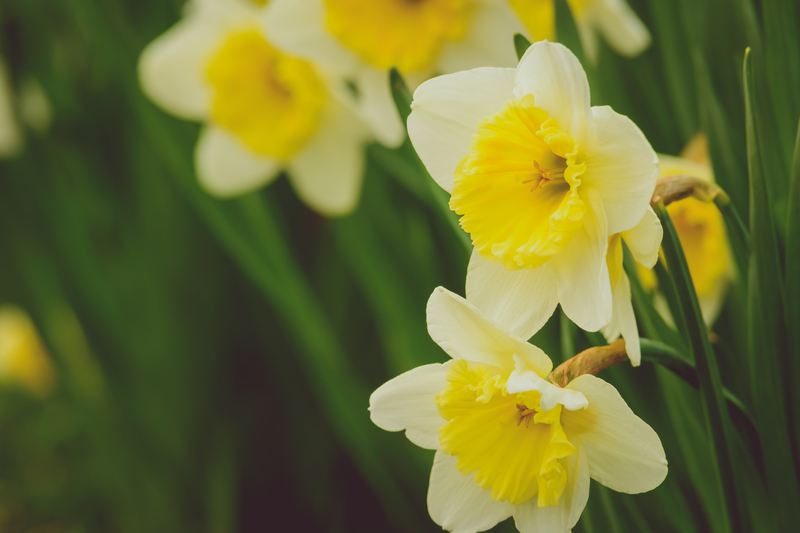Growing a flourishing garden
Posted on 11/06/2024
Growing a flourishing garden is a rewarding experience. Not only does it provide a beautiful outdoor space, but it also allows you to connect with nature and cultivate your own food. However, a thriving garden requires hard work, time, and dedication. With the right planning and techniques, anyone can have a flourishing garden that brings joy and nourishment all year round. In this article, we will discuss some important tips for growing a flourishing garden.
Planning Your Garden
The first step in growing a flourishing garden is planning. This involves choosing the right spot for your garden, deciding on what plants to grow, and creating a timeline for planting and harvesting.
Choose a spot in your yard that receives at least 6 hours of sunlight per day. The area should also have good drainage to prevent waterlogged soil. Consider the size of your garden and the type of plants you want to grow when selecting the spot.
When choosing what plants to grow, consider your climate, soil type, and available space. Research which plants thrive in your area and choose a variety of fruits, vegetables, herbs, and flowers.
Create a timeline for planting and harvesting based on the growing season in your region. Plant cool weather crops such as lettuce and peas in early spring and warm weather crops like tomatoes and peppers in late spring or early summer.

Preparing the Soil
The key to a flourishing garden is healthy soil that provides essential nutrients to your plants. Before planting, test your soil's pH levels to determine if it is too acidic or alkaline. You can purchase a testing kit or have your soil tested by a local extension office.
To improve the quality of your soil, add organic matter such as compost or aged manure. This will help retain moisture and provide essential nutrients for plant growth. Mix the organic matter into the top 6-8 inches of soil using a rake or shovel.
Planting and Maintenance
Once your garden is planned and the soil is prepared, it's time to start planting. Follow the spacing and depth guidelines for each plant, as overcrowding can lead to stunted growth and diseases.
Regular maintenance is crucial for a flourishing garden. Water your plants regularly, but be mindful not to overwater as it can cause root rot. Pull out weeds regularly to prevent them from competing with your plants for nutrients. Use natural pest control methods such as companion planting, handpicking insects, or using organic pest repellents.
Harvesting and Preserving
As your garden starts to produce fruits and vegetables, it's important to harvest them at the right time. Research the best time to pick each type of plant to ensure maximum flavor and nutrition.
To preserve your harvest for later use, consider freezing or canning. This will allow you to enjoy fresh produce from your garden even during winter months.
The Pros and Cons of a Flourishing Garden
Pros:
- Fresh and nutritious produce
- Aesthetically pleasing outdoor space
- Reduces grocery expenses
- Promotes eco-friendly practices
- Provides a sense of accomplishment
Cons:
- Requires time and effort
- Can be affected by weather conditions
- May require additional costs for tools and materials
Tips for Growing a Flourishing Garden
1. Start small - don't overwhelm yourself with a large garden right away.
2. Do your research - know which plants will thrive in your area.
3. Use companion planting techniques - some plants benefit from being planted next to each other.
4. Rotate crops - this helps prevent nutrient depletion in the soil.
5. Mulch - layering organic material over the soil helps retain moisture and suppress weeds.
6. Keep a gardening journal - track what works and what doesn't for future reference.
7. Don't be afraid to ask for help - seek advice from experienced gardeners or local gardening groups.

Takeaways
Growing a flourishing garden requires careful planning, preparation, and maintenance. Consider your location, soil, and available space when selecting plants. Regular maintenance and proper harvesting techniques can ensure a bountiful harvest. Despite the effort, the rewards of a flourishing garden are worth it for both your physical and mental well-being.
Conclusion
A beautiful and productive garden is within reach for anyone with the right knowledge and dedication. With proper planning, soil preparation, and maintenance, you can grow a flourishing garden that provides fresh and nutritious produce year-round. Remember to start small, do your research, and seek help when needed. Happy gardening!







